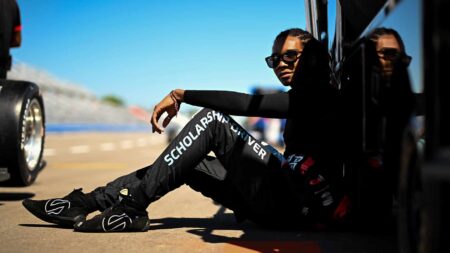
Lundgaard: McLaren can make history with F1/IndyCar double win
Christian Lundgaard is McLaren's new IndyCar star – and wants to make history by helping the team win both in F1 at Bahrain and at Long Beach Stateside on the same day
A series taken from the 164-page Motor Sport special Great Racing Cars, which is available to buy here
From the editor Damien Smith
How would you define a ‘great’ racing car? Race wins and championship titles are an obvious place to start – and admittedly, when we began the process of rounding up the ‘voices’ to fill this special magazine, published by the team behind Motor Sport, we had in mind the likes of the Lotus 72, Ferrari F2004, Porsche 917, Audi R10 and so on.
But as the interviews of familiar racing figures began, we realised greatness is often a very personal thing. Naturally, most – but not all – would pick cars they had experienced first-hand, as a driver, designer, engineer or team boss. And on occasion the cars that stood out in their minds as ‘great’ weren’t necessarily so in the grand scheme of history. That’s why you’ll find a Minardi here among Formula 1 cars from Lotus, Williams and McLaren.
Unexpected? Certainly. Wrong? Not to the man who chose it.
As the interviews accumulated, our magazine took on a life of its own, full of personal anecdotes about the myriad cars that made careers. Some of those we spoke to, such as Mario Andretti and Dan Gurney, couldn’t be tied to a single choice from multi-faceted lives at the wheel. Such heroes have earned the right to choose an F1, sports and Indycar, so we allowed them more than one bite.
Others refused to be confined by category. Hence the short ‘Odd ’n Sods’ chapter on cars that, by and large, are mere footnotes in lower divisions of racing lore.
Thus there is nothing definitive about the selection listed herein. Then again, there’s no claim that this compilation offers the ‘Greatest Racing Cars’ of history. It’s much more personal than that, much more quirky – and all the better for it.
Mario Andretti
1969 Indy 500 winner, 1978 F1 champion, versatility on wheels
In Indycars, the car that really launched my career was the Brabham/Brawner Hawk that Clint Brawner built in 1965. We raced that car through 1967 and won two championships with it.
In ’66 and ’67 I had two Indy 500s with that car that were the easiest of my career and I should have won, but we didn’t finish. That was a car I totally understood. I would decide what springs to run and we used to jack weight into the anti-roll bars with that car. We had some trick shit that really worked and I had a lot of fun racing it.
From the Motor Sport archive.
The 50th Indianapolis 500 mile race
The 50th Indianapolis 500-mile race will be remembered for two major upheavals, other than the lap one crash. Firstly, it is the end of an era, the era of the big hairy roadsters with brave middle-aged men driving them. Secondly, it is the start, regulations permitting, of the participation of scientific European road-racing teams, with their comparatively young, high-skilled drivers.
This year the front row of the grid consisted of three British chassis, a Brabham and two Lotuses, with Clark sandwiched between Andretti and Snider. The two American drivers had both been tyre testing at the track for some months and their cars were set as perfectly as could be possible, while Clark was complaining that his car was handling “like a pig,” which probably accounts for his two spins during the race.
Of the 33 starters, only one was front-engined, and he was the 33rd qualifier. Twenty-four cars were using the 4-cam Ford V8 engines, while the other nine were on Offenhausers. The Offenhausers were again split into three : three engines were 4.2-litre, twin-cam 4-cylinders, three were 2.8-litre, Roots-supercharged, 4-cylinder engines, and three were 2.8-litre, exhaust-driven turbocharged 4-cylinder engines.
This year not all the cars had offset suspension, the fastest qualifier, Andretti, had symmetrical suspension, as did all the Gurney Eagles. Although the suspension on these cars were not offset, the main fuel tank was on the left, so putting more static weight on the left-hand wheels. Tyre wear has improved to such a degree that, barring accidents, no one needed tyre changes. The 33 cars were split evenly on what tyres were used, 17 being on Firestone and 16 on Goodyear. Most of the Firestones were new low profile tubeless tyres which had a weight saving of up to 5 lb. per wheel.
To read the rest of this article click here.

Christian Lundgaard is McLaren's new IndyCar star – and wants to make history by helping the team win both in F1 at Bahrain and at Long Beach Stateside on the same day

Louis Foster starts his IndyCar journey this weekend in St Petersburg – can he emulate other British heroes like Nigel Mansell and Dan Wheldon?

Myles Rowe has rocketed through IndyCar's junior ladder with a story like no other – he tells James Elson why this upcoming year is more important than ever

Drive to Survive star Will Buxton has made the jump across the Atlantic to front Fox's new IndyCar coverage – he explained to James Elson why he thinks the championship is the most exciting series out there